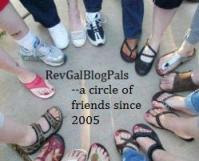Book Review: The New Parish
Posted on: October 13, 2014
Paul Sparks, Tim Soerens and Dwight J. Friesen, The New Parish: How Neighborhood Churches are Transforming Mission, Discipleship and Community, InterVarsity Press, 2014, 206 pp.
 A colleague selected The New Parish for our clergy book group. I was intrigued by the title, because the church I serve is in many ways a neighborhood church. The endorsements on the book included such luminaries as Phyllis Tickle, Brian McLaren and Walter Brueggemann, all of whom offered glowing comments about the innovations it offered. However, I found it to be a helpful encapsulation of many things I had already been doing as a pastor in a neighborhood church, and description of much of the work we are already doing as a congregation. It is a good and helpful resource, but it did not live up to its description as “groundbreaking.”
A colleague selected The New Parish for our clergy book group. I was intrigued by the title, because the church I serve is in many ways a neighborhood church. The endorsements on the book included such luminaries as Phyllis Tickle, Brian McLaren and Walter Brueggemann, all of whom offered glowing comments about the innovations it offered. However, I found it to be a helpful encapsulation of many things I had already been doing as a pastor in a neighborhood church, and description of much of the work we are already doing as a congregation. It is a good and helpful resource, but it did not live up to its description as “groundbreaking.”
The New Parish emerges from a group of congregations known as The Parish Collective. These churches commit themselves to living and serving as congregations in and with a particular neighborhood, basing their ministries on the needs and relationships with that locality. I found this to be an old idea made new again–for centuries of Christianity, parish-based ministry was the way of the church, with a church seeing itself as the primary vehicle for social service and spiritual care for a particular neighborhood or village. The difference today is that there are likely multiple faith communities and social service agencies in that same locality, and so partnership rather than possessiveness becomes more important. In my congregation, we see ourselves as a part of the downtown neighborhood in our small town, and we regularly engage in ministries connected to our neighborhood. We do so in partnership with a group of downtown churches, all located within a few blocks of one another.
I especially appreciated the insights the book offered about the ways that this new idea of parish ministry combats “the two most fragmenting forces of our day. The first can be called ‘the myth of the individual’ and the second ‘living above place.'” (23) We falsely believe that individuals exist autonomously, which is aided by our distance from firsthand experience of the impact of our existence (i.e., buying food disconnected from the reality of where it came from). The idea of the new parish returns the church to the location where it resides, and presses it into careful attention to the relationships in a particular place, overcoming the myth of the individual and stepping deeply into the place rather than living above it. Churches that belong to their neighborhoods avoid being places of homogeneity and consumer-oriented religion. They live out an incarnational theology, “just as Christ ‘became flesh and blood and moved into the neighborhood.'” (27, quoting John 1:14 in The Message)
The book traces a history of the church in prepositions: the church in (a particular community), the church of (a region, usually political), the church for (a missionary territory), the church with (a particular segment of society, like seekers). The idea of the new parish seeks to make the church “within and in-with,” meaning “within its place while collaborating with others in that place.” (45-46) The authors then offer a multitude of strategies, from walking the neighborhood to attending local functions to getting to know local business owners. This, in particular, was what I found less than innovative. Those are all things I have done throughout my ministry, in my current small town and even as an associate at a large urban church in a major city. In fact, a walking or dashboard survey of the neighborhood is the first assignment the seminary gives to every field education student I’ve ever supervised. Every few years, our church council participates, too. Perhaps the evangelical context, with its large buildings at the edge of town or by the highway, does not share that sensibility, which is why this appears more novel.
Another helpful section was the chapter on leadership. In a neighborhood parish, charisma, extroversion and high performance quality are less important in qualified leaders. Instead, the question becomes, “What is worth following?” The answer: “Character is king.”(166-167) A neighborhood leader must live with integrity, to be the same in front of a group as they are walking down the street, approachable and open and honest. I have found this to be very true in my context. My authority does not come from the polish and cleverness of my sermons, but from my day-to-day walking alongside people in their lives. Leadership, the authors say, takes the form of designing experiences that bring people together, conducting so as to bring together parts of the whole, and coaching with encouragement to all those engaged in ministry together.
As I said, I think The New Parish is helpful and insightful, even if I did not find it revolutionary. Perhaps the idea of neighborhood ministry will be novel to some, however. I recommend it for its insight into ministry in a parish setting–new or old–and its ideas for how to better engage an authentic, rooted congregational ministry.



Leave a comment